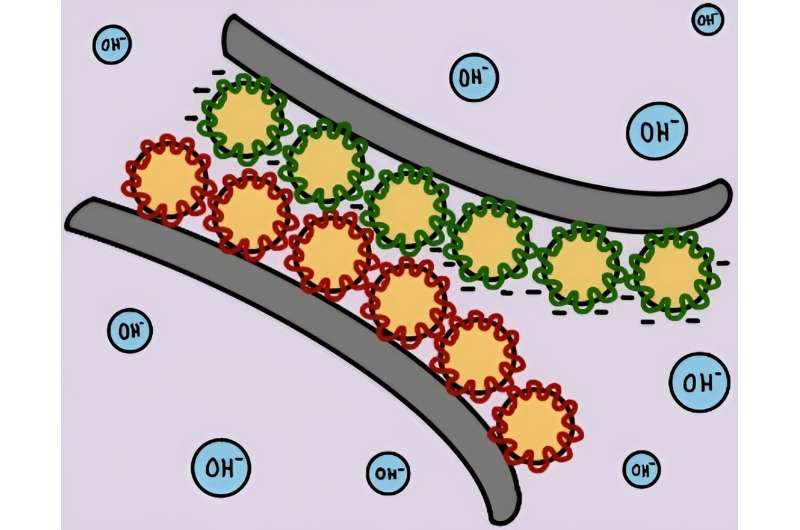This article has been reviewed according to Science X's editorial process and policies. Editors have highlighted the following attributes while ensuring the content's credibility:
fact-checked
trusted source
proofread
When sticky becomes unsticky—the invention of reversible glue

Newcastle University engineers have invented a new glue that promises to change how we recycle. Its reversible nature means it can be used for a multitude of purposes such as on the labels of bottles so that they are efficiently detached, making them easier to recycle. Labels will no longer need to be sent to landfill.
The reversible glue, developed by experts from Newcastle University's School of Engineering, is a water-based emulsion—a paint—that bonds together and can be separated by water that is either acidic or alkaline. Their work has been published in Angewandte Chemie International Edition.
The glue uses polymers that contain electrical charge to both keep the emulsion stable and to stick to different surfaces. When a surface coated with a positively charged emulsion is joined to a surface coated with a negatively charged one, the two components stick together.
However, if the bond is immersed in water that is either slightly acidic (pH 2, about the same as lemon juice) or alkaline, it fails. This opens up possibilities for recycling, because it allows the separation on demand of components that have reached the end of their useful life.
First author of the paper, Dr. Adriana Sierra-Romero, Research Associate at the School of Engineering, said, "We have been working with waste management company, Biffa, and we have shown that with our glue, a propylene label stuck to a PET bottle can be removed by the wash water in their recycling plant. Although the bottles can be recycled, these labels are usually sent to landfill, so we know our technology can really make a difference. There will be many other industries where our glue can be used, and we look forward to working with other companies."
The glue is based on current industrial processes—those for making a paint—and is developed from cheap materials so it can be scaled up easily. Because it is water-based it does not have the volatile organic solvents used in many commercial glues, but unlike other water-based adhesives, exposure to humid environments does not cause bond failure. The team has shown that its shelf life at room temperature is at least a year, so it is also inherently stable.
The glue is targeted at plastic surfaces, but it can bond to other surfaces too. Plastics are where most applications are expective, and it is particularly effective at surfaces used in the packaging industry like polypropylene and polyethylene, which are inaccessible to many glues. Target industries include bottle recycling, but the work could be applied to other areas of packaging as well as the recycling of automotive parts or in electronics.
The lead investigator on the project, Professor Mark Geoghegan, Professor of Engineering Materials, added, "I first thought that charged polymers could be used for reversible adhesion back in 1999. Back then, this was blue sky research, and it is very exciting to see that we now have a glue based on these principles."
Dr. Katarina Novakovic, Reader in Polymer Engineering and co-investigator on the project said, "Companies are making more and more ambitious net zero targets. Our glue will help them achieve these.
"Newcastle University has a great record in sustainability. It is embedded in our curricula, for example, I am involved in teaching our undergraduate students about bottle recycling and they really enjoy this real-life example. It is great that we have a glue that can improve industrial processes in these areas."
More information: Adriana Sierra‐Romero et al, A reversible water‐based electrostatic adhesive, Angewandte Chemie International Edition (2023). DOI: 10.1002/anie.202310750



















